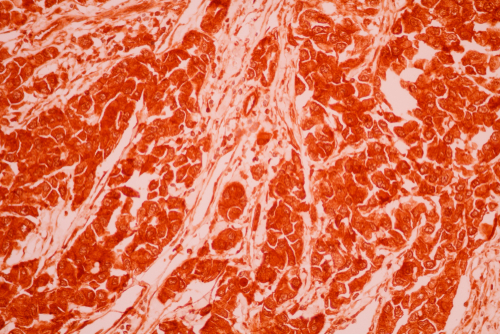New pathology guideline advances accuracy in breast cancer testing
Newswise Jan 19, 2019
The College of American Pathologists (CAP) has published the first-ever evidence-based clinical practice guideline to help laboratories use quantitative image analysis (QIA) in HER2 immunohistochemistry (IHC) testing for breast cancer.

The guideline was published in an early online edition of the Archives of Pathology & Laboratory Medicine. QIA is the computer algorithm-assisted detection of specific features in an image following the digitalization of a glass slide image. Advancements in genomics, computing, and imaging technology are spurring new opportunities to use QIA for diagnostic testing. And while it has been shown to improve consistency and accuracy of interpretation compared to manual scoring by pathologists, the lack of a clinical guideline has been a barrier to wider QIA adoption.
“We set out to bridge the gap between technology and clinical practice with recommendations based on expert review of published literature,” said project chair Marilyn M. Bui, MD, PhD, FCAP, of the Moffitt Cancer Center, in Tampa, FL. “The recommendations will aid laboratories to ensure that diagnoses are accurate and consistent, which is essential to each patient’s prognosis and treatment planning.”
To develop the guideline, the CAP convened an expert panel of pathologists and histotechnologists with expertise in digital pathology, immunohistochemistry, quality management, and breast pathology. The panel systematically reviewed more than 250 relevant articles and relied on evidence from more than 65 to develop the guideline’s 11 recommendations. The guideline development process also included an open public comment period to include comments from professional associations and individuals, feedback from the guideline advisory panel, and independent peer review from a panel of CAP members.
Notably, the guideline recommends steps to validate QIA before implementing it, as well as steps for ongoing maintenance and evaluation so that quality is controlled and assured. Additionally, it recommends that laboratories should validate their QIA results for clinical use by comparing them to an alternative, validated method(s) such as HER2 in-situ hybridization methods or consensus images for HER2 IHC. The American Society for Clinical Pathology (ASCP) has endorsed the guideline through informed consideration by the ASCP Commission on Science, Technology & Policy.
-
Exclusive Write-ups & Webinars by KOLs
-
Daily Quiz by specialty
-
Paid Market Research Surveys
-
Case discussions, News & Journals' summaries
